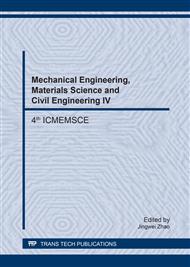p.136
p.144
p.151
p.156
p.163
p.169
p.174
p.181
p.186
Microstructure Characteristics and Properties of 1561 Aluminum Alloy Weldments Processed by Different MIG Welding
Abstract:
The mechanical properties and microstructural features of 1561 aluminum alloy weldments processed by single-wire MIG welding and CMT TWIN welding are investigated. The microstructure and mechanical properties of welded joints were studied by nondestructive testing, metallurgical test, scanning electron microscopy test, fatigue and tensile test. It is revealed that the welding efficiency of CMT TWIN welding is more than six times as much as single-wire MIG welding. It can be easy to find weld zone (WZ), fusion line (FL), heat affected zone (HAZ) and base metal (BM) with different characteristics in the metallographic specimen. In weld zone, the particle phase sizes are smaller than that of base material, but the densities of particle phase are increased. The sample fatigue strength of CMT TWIN welding is higher than the singe-wire MIG welding. It is suggested that the CMT TWIN welding has several advantages compared with single-wire MIG welding.
Info:
Periodical:
Pages:
163-168
Citation:
Online since:
March 2017
Authors:
Keywords:
Price:
Сopyright:
© 2017 Trans Tech Publications Ltd. All Rights Reserved
Share:
Citation:


